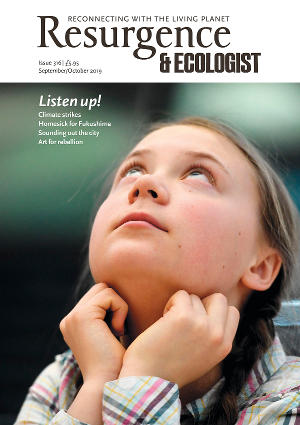Since the 1950s the UK has suffered a net loss of around 41% of its hedgerows. Not all were ripped up: many have suffered the disease of neglect. Hedgerows and the margins that surround them are vital for both wildlife and the farmed environment, yet have not been treated with the respect they deserve. Around 70% of the UK is under farming of one sort or another, and the vast majority of wildlife on those farms relies on these marginal areas.
I have long been prejudiced in my fondness for hedgerows. My principal study animal, the hedgehog, as the name suggests, spends a disproportionate amount of its life in and around the hedgerow. I am also strongly of the mind that the fragmentation of our landscape is one of the most important conservation issues we need to overcome – and the easiest way to do that is to repair the damaged ‘linescape’.
It is pleasing to find that my prejudices are reinforced with this rigorous book. Hedgerows are clearly vital and are also clearly under threat. While now there is a presumption to keep hedgerows – not that the recent news surrounding developers netting and destroying hedges would suggest that was the case – they are at risk from the drift of agrochemicals applied to the fields they enclose. I was shocked to see that just 0.1% of pesticide applications reaches the target pest, the remaining 99.9% being absorbed into the wider environment.
The problem with agrochemicals hitting hedgerows is that they undermine their capacity to be useful habitats and corridors for wildlife. For example, fertiliser encourages the growth of grass or crops, preventing the diversity of life that makes a hedge rich from flourishing. So the field margins are vital in insulating hedges from that insult.
The key point to take from this necessary book is that hedgerows play a vital part in maintaining wildlife’s tenuous grip within our farmed landscape, and that hedgerows and field margins can be managed in such a way as to strengthen that grip. We have 300,000km less hedge in the UK now than we did 60 years ago, and of the remaining hedges around 60% are not in ‘favourable condition’. We will lose what we have through neglect and the control required by the cult of tidiness, unless there is a real transformation in the manner in which they are managed.
The loss of hedgerows mirrors the decline of much rural wildlife. Without hedgerows, some landscapes are reduced to ecological deserts. This book provides the robust scientific evidence for the importance of this rural feature and is therefore a powerful tool with which to challenge the present requirements for management and subsidy payment. We can rebuild this network, if there is the political will and courage to do so – but it will not be rebuilt unless we care enough to argue for its importance. We need these relicts of wildness to be treated with seriousness, as they are key to the reconnection of our fragmented landscape.
I suppose this review needs a warning – this is an academic tome, and some of the chapters are denser than others. But it remains accessible and above all important. I wish this volume had been around while I was researching for my last book, or at least when I was recruited to the Chris Packham project of the People’s Manifesto for Wildlife. But now it is available for us all – and well worth the wait.






